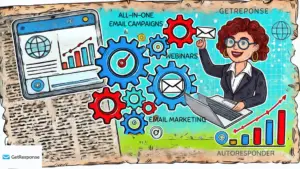How to Promote Affiliate Links Without Spending Money
7 Free Traffic Sources You Need to Know
Promoting affiliate links can be tricky, especially if you’re working with a tight budget. While paid ads can yield results, they can quickly eat into your profits if you’re not careful. Fortunately, there are effective ways to drive traffic to your affiliate offers without spending a dime.
In this post, I’m going to share 7 free traffic sources and how to promote affiliate links without spending money that you can leverage today to promote your affiliate links and grow your online income.
1. Medium.com: Leverage Built-In Audience and Authority
Why Medium Works:
Medium is a popular platform that hosts a massive, built-in audience across countless niches. What’s great about Medium is that you don’t need an established blog or audience to get your content seen—Medium’s algorithm promotes quality content and helps it reach readers who are already interested in your topics.
How to Promote Affiliate Links on Medium:
- Write informative, engaging articles that solve a specific problem or offer valuable insights related to your niche.
- Strategically incorporate your affiliate links within the content. For example, if you’re writing a product review, include your affiliate link when recommending the product.
- Use keyword-rich titles and tags to improve your chances of getting featured in Medium’s recommendations and search results.
Pro Tip: Join relevant Medium publications to increase the visibility of your articles. Publications have large audiences and can boost your reach significantly.
2. Pinterest: Tap Into Visual Search Traffic
Why Pinterest Works:
Pinterest is not just a social media platform; it’s a visual search engine where people actively search for ideas, products, and solutions. If your niche is visual or instructional (e.g., health, fitness, DIY, recipes, personal finance), Pinterest can be a goldmine for free traffic.
How to Promote Affiliate Links without Spending Money on Pinterest:
- Create eye-catching pins that link directly to your blog posts, landing pages, or affiliate offers.
- Use text overlays on your pins to clearly convey the benefit of clicking through (e.g., “How to Save $500 a Month with This Simple Budgeting Tool”).
- Optimize your pin descriptions with relevant keywords and hashtags so your pins show up in search results.
Pro Tip: Consistency is key. Aim to pin multiple times a day and use scheduling tools like Tailwind to automate the process and keep your content circulating.
3. Instagram: Build a Visual Brand and Drive Traffic
Why Instagram Works:
Instagram is one of the most popular social media platforms with over a billion active users. If you’re in a visually driven niche like lifestyle, fitness, beauty, or travel, Instagram can be an effective free traffic source. Even better, Instagram’s community-focused environment makes it perfect for building trust and engagement—crucial elements for affiliate marketing.
How to Promote Affiliate Links without Spending Money on Instagram:
- Share high-quality images and videos that resonate with your niche and audience. Use engaging captions that provide value or tell a story.
- Use Instagram Stories to promote your offers. You can add affiliate links directly in Stories (if you have access to the link feature) or direct followers to the link in your bio.
- Host live sessions or Q&As to build a relationship with your audience while promoting your affiliate products subtly.
Pro Tip: Leverage Instagram Reels and carousels to create educational or entertaining content that keeps your audience engaged. The more you interact with your followers, the more likely they are to check out your links.

4. Blogging: Create Evergreen Content That Continues to Drive Traffic
Why Blogging Works:
Blogging remains one of the most powerful long-term strategies for driving organic traffic. Each blog post you write is a long-term asset that can rank in search engines and attract visitors for years. Even better, you have full control over how you present your affiliate links and promotions.
How to Promote Affiliate Links with Blogging:
- Write detailed, SEO-optimized blog posts that focus on solving a problem or answering a common question in your niche.
- Incorporate your affiliate links naturally within your content. For example, if you’re writing a “how-to” guide, recommend relevant products using your affiliate links.
- Use strong calls-to-action (CTAs) that encourage readers to click through your links and make a purchase.
Pro Tip: Regularly update your best-performing blog posts to keep them relevant and maintain their search engine rankings. Internal linking to related posts also helps retain readers and improves your blog’s overall SEO.
5. Vocals.media: Publish on a Growing Content Platform
Why Vocals Works:
Vocals is a content platform similar to Medium, where you can publish articles and earn based on engagement. While it’s still growing, Vocal is a great platform for reaching new audiences and repurposing content you’ve already created on your blog or Medium.
How to Promote Affiliate Links on Vocals:
- Write stories, reviews, or how-to guides that naturally include your affiliate links.
- Share your content on other social media platforms to drive traffic back to your Vocal articles.
- Engage with the Vocal community by reading and commenting on other articles—this increases visibility for your content.
Pro Tip: Storytelling works well on Vocal. Frame your affiliate marketing promotions as part of a personal journey or a success story that’s relatable and engaging.
6. X (Twitter): Build Engagement and Authority in Real-Time
Why Twitter Works:
Twitter (now known as X) is perfect for real-time engagement and building authority in your niche. The platform allows you to quickly connect with like-minded individuals, share tips, and promote your content to a highly engaged audience.
How to Promote Affiliate Links without Spending Money on X (Twitter):
- Share bite-sized tips, insights, and quotes that are relevant to your audience. Include links to your blog posts or landing pages where your affiliate offers are featured.
- Use Twitter threads to dive deeper into topics and provide value while subtly promoting relevant products or services.
- Participate in niche-specific Twitter chats or conversations to grow your follower base and establish yourself as an expert.
Pro Tip: Regularly retweet and engage with others in your niche to build relationships and increase the visibility of your content.
7. Facebook Groups: Engage with Targeted Communities
Why Facebook Groups Work:
Facebook Groups are highly engaged communities where people discuss specific topics, ask for advice, and share resources. As an affiliate marketer, these groups provide a direct way to connect with people who are already interested in what you have to offer.
How to Promote Affiliate Links in Facebook Groups:
- Join groups related to your niche and participate actively by answering questions, offering tips, and sharing valuable content.
- Share your blog posts, videos, or resources within the group when it’s relevant to the conversation.
- Create your own Facebook Group focused on your niche and build a community where you can share your affiliate content regularly.
Pro Tip: Don’t spam groups with constant promotions. Focus on building trust by providing value first—when people see you as a helpful resource, they’re more likely to click on your links.
Promoting affiliate links without spending money is not only possible—It can be incredibly effective if you focus on the right platforms . By leveraging free traffic sources like Medium, Pinterest, Instagram, and more, you can attract a targeted audience, build trust, and increase your affiliate sales without breaking the bank. The key is consistency—focus on mastering one or two platforms at a time and always aim to provide value in everything you share.














